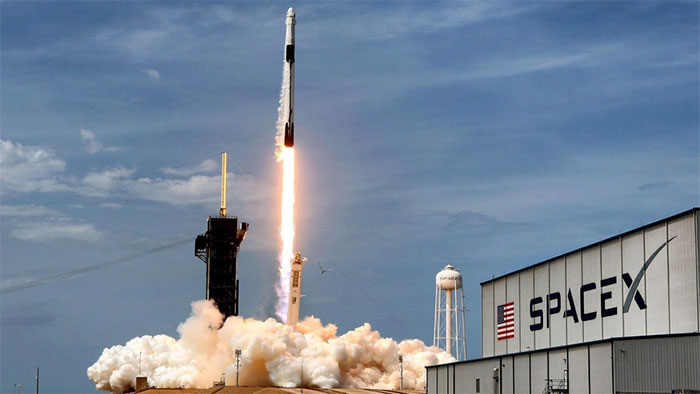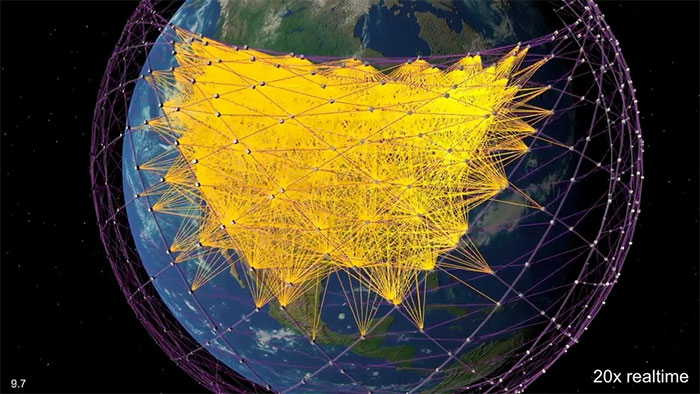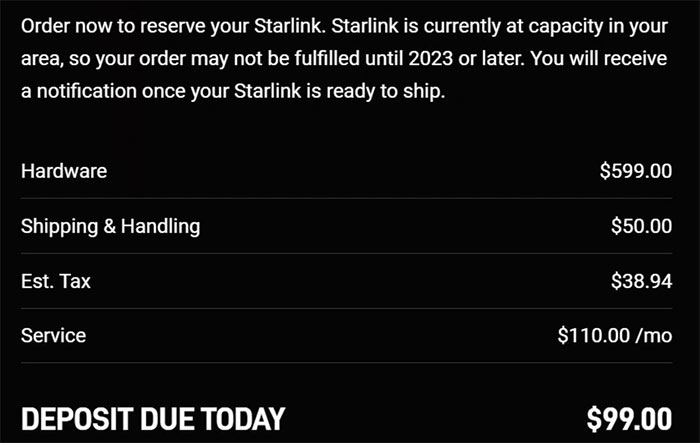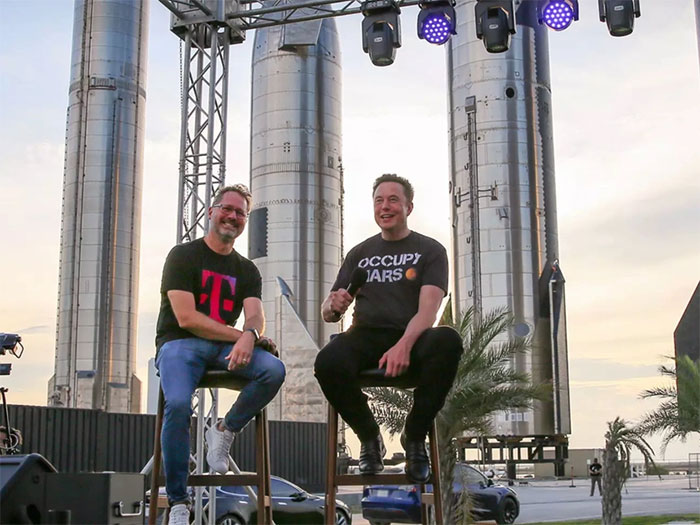The ambition of Starlink is to provide high-speed Internet access everywhere on Earth, a necessary application for many major players in the transportation and telecommunications industries.

Starlink’s satellite network can cover Internet access to every corner of the Earth. (Image: Getty).
Starlink is a global satellite Internet coverage project by the space exploration company SpaceX, founded by Elon Musk. This service creates a network of thousands of satellites orbiting the Earth, providing high-speed Internet from low Earth orbit to remote and isolated areas.
Since its initial operation in October 2020, Starlink has reported that it currently has 400,000 subscribers across 36 countries where the company operates. Almost every major player in the transportation sectors, such as luxury cruise lines and airlines, wants to partner with this Internet service.

SpaceX’s upcoming plan is to launch 42,000 satellites into orbit using Falcon 9 rockets. (Image: Getty Images).
If Starlink can realize its ambitions, the service could transmit data directly to mobile phones, eliminating dead zones around the globe.
Advantages that Keep Starlink at the Forefront of Satellite Internet
Satellite Internet is a useful solution for areas where traditional Internet systems cannot reach, such as mountainous regions or remote locations. However, the limitations of developing satellite Internet include policies in each country and economic and social barriers that affect many people’s ability to access the Internet.
Starlink breaks through these barriers thanks to the launch platform from SpaceX. To date, the company founded by the world’s richest billionaire has launched thousands of satellites into orbit. Because the satellites are all operating in low Earth orbit, Starlink consistently offers the fastest connection speeds between satellites and the ground.
Since 2018, Starlink has launched approximately 3,000 low Earth orbit satellites into space. By mid-2027, this service aims to have up to 42,000 satellites.

Illustration of Starlink satellites in orbit. (Image: University College of London).
When first launched, SpaceX indicated in an email to beta test subscribers that expected speeds would reach 50-150 Mbps, with occasional interruptions. However, the company has exceeded those expectations by delivering much higher speeds to users.
Starlink even achieved connection speeds of up to 175 Mbps under freezing temperatures, high winds, and snow, according to a 2020 test by SpaceX.
High Costs
With its superior advantages over traditional carriers, it is understandable that the monthly cost of using Starlink is not cheap, priced at $110 per month. Additionally, new subscribers need to purchase a dish and router necessary to connect with the satellites, which the company sells for $600.
This price has significantly increased since Starlink first launched its service. In October 2020, customers only needed to pay $600 upfront for both the connection equipment and the monthly fee for this satellite Internet service. According to Insider, the registration process for Starlink services is based on a “first come, first served” basis.
The high costs for individual users make Starlink’s business prospects in developed countries less than promising. Statistics show that 96% of households in the UK already have high-speed Internet. Markets in the US and EU are similar, with 90% of households also having high-speed Internet access.

The monthly cost of using Starlink is not cheap. (Image: CNET).
“Most developed countries around the world are already equipped with sufficient network connectivity. Starlink is targeting a specific customer segment in the market to generate profits,” said Professor Sa’id Mosteshar, Director of the Institute of Space Law and Policy at University College London.
Major Companies Want to Collaborate
However, for large businesses that require a network capable of operating anywhere, Starlink is the perfect solution.
Starlink has signed contracts with major players in the travel transportation industry, such as Royal Caribbean, Hawaiian Airlines, and the semi-private regional jet service JSX to provide WiFi for passengers. The company is negotiating with two airlines, Delta and Frontier Airlines, to further expand its reach in the skies.
By the end of August, the American carrier T-Mobile announced that it would use Starlink satellites, owned by SpaceX, to provide better mobile network services for American citizens. Accordingly, T-Mobile will connect users’ mobile phones directly to the satellites in orbit.

T-Mobile in the US collaborating with Starlink satellites promises to bring Internet access to every corner of the Earth. (Image: Getty Images).
Regarding this issue, Musk stated that Starlink satellites will use mid-band spectrum frequencies from T-Mobile to create a new connection network. Therefore, most customer devices will be compatible with this new service. Testing will begin with messaging services at the end of next year.
On Twitter, the CEO of SpaceX wrote that Starlink V2 satellites could eliminate dead zones globally and improve network connectivity.

















































